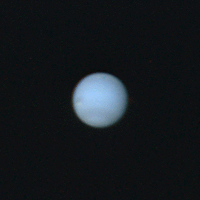Printable Version of Topic
Click here to view this topic in its original format
Unmanned Spaceflight.com _ Uranus and Neptune _ Reprocessed versions of Uranus and Neptune approach movies?
Posted by: elakdawalla Mar 8 2016, 04:35 PM
I've had two inqiuries in the last month for modern processed versions of the Voyager 2 Uranus and/or Neptune approach images, like the ones available for Jupiter (e.g. https://youtu.be/l-9ULWGHFD0 and https://youtu.be/ylesfYhbwPY) and Saturn (e.g. https://vimeo.com/106046991). Has anybody out there worked on Uranus or Neptune?
Posted by: Ian R Mar 8 2016, 07:55 PM
Yes, I'm fiddling with a Neptune movie, Emily. The Uranus sequence would be somewhat difficult to work with, I would've thought.
Posted by: elakdawalla Mar 8 2016, 08:37 PM
Looking forward to seeing Neptune ![]()
Posted by: James S. Mar 8 2016, 08:46 PM
I am looking forward to it as well. There's just something about Uranus, Neptune, and Pluto that excites.
Posted by: JohnVV Mar 8 2016, 11:07 PM
i have the Neptune flyby in a folder and have been slowly georeferencing them and inpainting the every other row on the left and right side
and the reseaus marks
from a post i uploaded a bit back
http://imgbox.com/7FX8iOAX
http://imgbox.com/YJZ1nxvi
the unedited/ NOT Cleaned up image
http://imgbox.com/z1BdnnGH
i still have a bunch to clean up
-- like this one
http://imgbox.com/7WYPfmib
and
http://imgbox.com/yVbSHO7C becomes this http://imgbox.com/vRP3jNOi
Posted by: Astroboy Mar 8 2016, 11:07 PM
I'm still not able to process spacecraft images like the big leaguers can, due to the unavailability of batch .img to .png converters for Mac and the fact that I don't have Photoshop, but I can still whip up some stabilized image sequences pretty easily. I've wanted to do videos showing the relative speeds of the gas giants' atmospheres and their moons' orbits, while also demonstrating the decreasing bandwidth with each encounter. It's an approach I don't think I've seen anyone else try. 48 minutes per second would be ideal, because that's the speed you get when you play back the image sequences with the highest "frame rates" at 29.97 frames per second.
Posted by: JohnVV Mar 8 2016, 11:18 PM
Astroboy
ISIS3 dose run on Apple - not the best but dose run
isis3 is what i use on ScientificLinux 6.7 and OpenSUSE 13.2
and GDAL ( "gdal-translate") runs on Linux,Apple and ON Microsoft
Posted by: Ian R Mar 9 2016, 01:40 PM
Very early look at what the Neptune sequence will eventually look like:
https://vimeo.com/158240790
Posted by: elakdawalla Mar 9 2016, 08:24 PM
That is already awesome ![]()
Posted by: Bjorn Jonsson Mar 11 2016, 12:26 AM
This is something I have wanted to do for a long time but haven't started yet. These images are much more difficult to process than the Jupiter images but I have better software now than back when I made the Voyager 1 Jupiter movie and this compensates a bit (in particular I can now use the SPICE C kernels to get the north azimuth).
What I would probably do is a movie consisting of fewer frames than Ian's movie above but it would be in full color. I don't know when I'll do this but I know it is possible.
Posted by: Astroboy Jun 4 2016, 05:30 PM
Neptune in Voyager OGB color on June 7, 1989, 03:38:48 - 08:13:12. These frames were taken during the first continuous multispectral sequence. About ten frames per second, or five hours per second.
Posted by: dtolman Feb 11 2019, 04:04 AM
@Astroboy - did you get any farther with your Neptune sequence? Would love to see an updated version of that roughcut you posted (or a longer one showing Voyager looking back)!
Powered by Invision Power Board (http://www.invisionboard.com)
© Invision Power Services (http://www.invisionpower.com)
